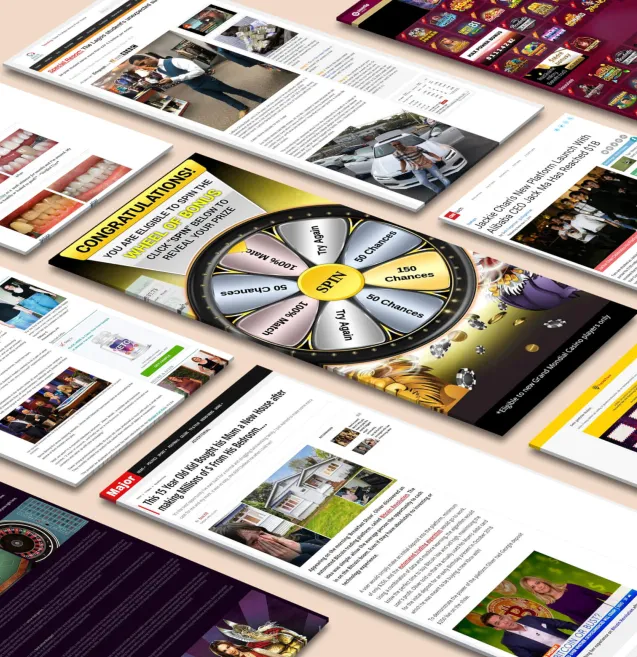
Our spy tools monitor millions of native ads from over 60+ countries and thousands of publishers.
Get StartedNative advertising has evolved from manual placements to a complex automated system. Programmatic native ads use real-time bidding (RTB) technology to connect advertisers with publishers quickly through automated auctions.
RTB improves ad placement efficiency by:
This flexible approach allows advertisers to precisely target specific audiences while preserving the organic feel of native advertising. In this article, you'll find proven strategies for achieving success with RTB, including techniques for audience segmentation and methods for optimizing bids.
We will also delve into the technical aspects of programmatic native advertising, outline practical steps for implementation, and highlight key factors to consider in order to maximize the effectiveness of your RTB campaigns.
In addition to these strategies, it's also worth exploring alternative traffic sources such as pop ads, which can drive low-cost high-volume traffic when used effectively.
Programmatic native ads are a combination of automated advertising and contextual advertising. These ads use artificial intelligence (AI) to automatically place ads on publisher platforms, making them look and feel like part of the website.
The process of buying and selling these ads is done automatically through a system involving:
Real-time bidding makes this system more dynamic by turning it into an auction. Here's what happens when a user visits a webpage:
The RTB process uses machine learning algorithms to evaluate various factors such as:
This automated system allows advertisers to bid on individual impressions at scale, ensuring that their ads are shown to the right people in the right places. The AI-driven approach continuously improves bidding strategies based on performance metrics, creating a self-improving system for delivering native ads.
These native ads, which seamlessly blend into content, are becoming increasingly popular among advertisers who want to get the most out of their advertising budget.
RTB platforms offer powerful advantages for native advertising campaigns. Here's what you gain by implementing RTB in your native ad strategy:
These capabilities enable advertisers to maximize their native ad investments through data-driven decision-making and automated optimization. The combination of speed, precision, cost control, and comprehensive analytics creates a powerful ecosystem for delivering high-performing native advertising campaigns.
Successful RTB native advertising campaigns rely on strategic implementation and continuous refinement. Here are the essential practices to maximize your campaign effectiveness:
These practices require regular refinement based on campaign data. Your DSP's analytics tools can help identify patterns in user behavior and bidding performance. By combining these insights with creative optimization, you can create more engaging native ad experiences that drive better results through RTB platforms.
Privacy regulations shape the landscape of programmatic native advertising. GDPR and CCPA compliance requires:
Ad fraud poses significant challenges in RTB environments. Protect your campaigns by:
Smart bid management strategies prevent budget waste:
Successful RTB implementation requires robust tracking systems to identify suspicious patterns and optimize bid values. Regular audits of exchange partners help maintain campaign integrity and ensure compliance with evolving privacy standards.
A well-structured data management platform (DMP) serves as the foundation for both privacy compliance and fraud prevention, while supporting intelligent bid optimization across your programmatic native campaigns.
The Interactive Advertising Bureau's OpenRTB Dynamic Native Ads API Specification sets industry-wide standards for native advertising in real-time bidding environments. This specification creates a unified language for buyers and sellers to communicate effectively in the RTB marketplace.
The specification defines structured formats for:
The API specification enables DSPs and SSPs to process native ad opportunities through standardized data formats. This standardization reduces technical barriers and streamlines the integration process across different platforms.
Key benefits of the specification include:
The specification also includes validation rules and best practices for implementing native ads programmatically. These guidelines help maintain quality standards while ensuring proper rendering of native ad content across diverse publisher environments.
Programmatic native advertising through real-time bidding is a powerful combination of automation and contextual relevance. It allows advertisers to deliver personalized ad experiences while optimizing their spending, making it an invaluable strategy in today's digital landscape.
The strategies outlined in this guide - from audience segmentation to bid management - provide a roadmap for success in the world of RTB. By implementing these practices and staying compliant with industry standards, you'll position your campaigns for maximum impact.
Ready to transform your native advertising approach?
Your journey into programmatic native advertising starts now. Take the first step by selecting a trusted RTB platform and begin experimenting with these powerful targeting capabilities.
Receive top converting landing pages in your inbox every week from us.
How-To
Native ads can do more than drive clicks—they can build long-term brand loyalty. Learn how to use authentic storytelling, strategic placement, and audience targeting to strengthen trust during year-end campaigns. Discover how subtle, value-driven messaging keeps customers engaged beyond the holidays. Ideal for marketers aiming to turn seasonal buyers into loyal brand advocates.
Marcus Chen
7 minDec 15, 2025
Must Read
As third-party cookies fade away, contextual targeting is making a powerful comeback. Learn how to leverage native ads that align with user intent and content relevance to maintain high engagement and conversions. Discover modern tools and tactics that make cookie-free targeting both precise and scalable. Ideal for advertisers seeking privacy-friendly ways to drive performance in 2025 and beyond.
Liam O’Connor
7 minDec 9, 2025
Recently Updated
Native ads can make or break your holiday marketing success. Explore how to evaluate your recent campaigns and identify what worked—or what fell short—with native advertising. Learn key optimization tactics to boost engagement, strengthen audience trust, and increase conversions in future promotions. Ideal for marketers aiming to refine their ad strategies after the holiday rush.
Elena Morales
7 minDec 1, 2025




